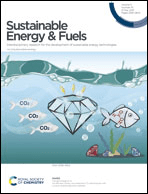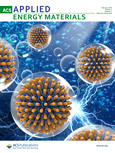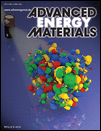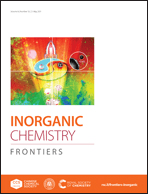
Nano Energy
Scope & Guideline
Advancing Nanotechnology for a Greener Tomorrow
Introduction
Aims and Scopes
- Energy Harvesting Technologies:
Research on novel nanogenerators, including triboelectric, piezoelectric, and hybrid systems, aimed at converting mechanical energy from various sources (like human motion, wind, and water) into electrical energy. - Nanomaterials for Energy Conversion:
Development and application of nanomaterials in solar cells, batteries, and fuel cells, focusing on improving efficiency, stability, and performance through innovative material design and engineering. - Self-Powered Systems:
Exploration of self-powered devices and systems that integrate energy harvesting technologies with sensing capabilities, enabling autonomous operation in various applications, including wearable electronics and environmental monitoring. - Electrocatalysis and Energy Storage:
Investigation of electrocatalysts for energy conversion processes such as CO2 reduction and water splitting, as well as the design of advanced electrodes and electrolytes for batteries and supercapacitors. - Environmental Sustainability:
Research that addresses energy solutions with minimal environmental impact, including biodegradable materials, recycling of energy devices, and systems for energy-efficient water purification.
Trending and Emerging
- Triboelectric Nanogenerators (TENGs):
TENGs have emerged as a leading topic, focusing on their applications in energy harvesting from diverse sources, including biomechanical movements, environmental vibrations, and fluid dynamics. - Flexible and Wearable Energy Systems:
The development of flexible, stretchable, and wearable energy devices is trending, driven by the demand for portable and user-friendly applications in health monitoring and smart textiles. - Hybrid Energy Harvesting Systems:
Research on hybrid systems that combine multiple energy harvesting mechanisms (e.g., piezoelectric and triboelectric) to enhance overall efficiency and broaden application scopes. - Advanced Electrocatalysts for Sustainable Energy:
There is a growing focus on designing novel electrocatalysts for CO2 reduction and hydrogen production, particularly those that leverage nanostructured materials for improved efficiency. - Bioinspired and Sustainable Materials:
The use of bioinspired and environmentally friendly materials in energy devices is increasingly popular, reflecting a broader commitment to sustainability in energy research.
Declining or Waning
- Traditional Energy Storage Systems:
There has been a noticeable decline in publications focusing solely on conventional lithium-ion batteries, as newer technologies such as sodium-ion and solid-state batteries gain traction due to their potential for higher safety and efficiency. - Basic Theoretical Studies:
Research focused on theoretical modeling without practical application or experimental validation has decreased, as the community increasingly emphasizes experimental results and practical implementations. - Static Energy Conversion Devices:
Devices with fixed configurations and limited adaptability have seen reduced interest, with a shift towards more dynamic, multifunctional systems that can respond to varying environmental conditions.
Similar Journals

Advanced Energy and Sustainability Research
Empowering Research for a Sustainable FutureAdvanced Energy and Sustainability Research is a leading open-access journal published by WILEY since 2020, dedicated to advancing knowledge and understanding in the realms of energy and sustainability. With an impressive impact factor and a commitment to high-quality, peer-reviewed research, this journal serves an international audience of researchers, professionals, and students passionate about addressing critical environmental challenges. The journal encompasses a wide array of topics within environmental science and energy fields, securing notable rankings in Scopus with top percentiles across several categories, including Ecology, Energy Engineering and Power Technology, and Waste Management. Given its open-access model, Advanced Energy and Sustainability Research facilitates the dissemination of cutting-edge research, enhancing accessibility and fostering collaboration within the scientific community. This journal not only plays a pivotal role in shaping public policy and industry practices but also aims to inspire innovative solutions for sustainable development in an increasingly complex world.

CHEMICAL SOCIETY REVIEWS
Shaping the Future of Chemistry with In-Depth AnalysisCHEMICAL SOCIETY REVIEWS, published by the Royal Society of Chemistry, serves as an essential platform for researchers, professionals, and students in the field of chemistry. Since its inception in 1972, this prestigious journal has maintained its status as a leading publication, currently positioned in the Q1 category for Chemistry (miscellaneous) and ranking #2 out of 408 journals in the field of General Chemistry on Scopus, with an impressive 99th percentile recognition. With a focus on comprehensive reviews that synthesize key advancements and methodologies, it promotes open discussion and critical analysis crucial for driving innovation within the discipline. Although it operates under a subscription model, the journal strives to foster knowledge dissemination among the global chemistry community, ensuring accessibility to cutting-edge research and insights that shape the future of chemical sciences through its extensive array of articles.

Sustainable Energy & Fuels
Empowering Sustainable Innovations in Fuel TechnologySustainable Energy & Fuels is a leading journal published by the Royal Society of Chemistry, dedicated to advancing knowledge in the fields of energy engineering, fuel technology, and renewable energy solutions. With its ISSN of 2398-4902 and notable Q1 status in both Energy Engineering and Power Technology as well as Fuel Technology, this journal ranks impressively in the Scopus database, ensuring a strong platform for disseminating impactful research. The journal spans a comprehensive scope aimed at addressing the global challenges of sustainable energy, including innovative methodologies and technologies that promote environmental sustainability. Although it operates under a traditional access model, the journal is committed to providing high-quality content that engages researchers, professionals, and students alike. With significant contributions expected through 2024, Sustainable Energy & Fuels stands at the forefront of facilitating scholarly communication, inspiring advancements in energy technologies that align with sustainability goals.

ACS Applied Energy Materials
Exploring Cutting-edge Advances in Energy SystemsACS Applied Energy Materials, published by the American Chemical Society, is a premier journal dedicated to the cutting-edge fields of energy materials, chemical engineering, and electrochemistry. With an impressive impact factor and consistently ranked in the Q1 category across multiple disciplines—including Chemical Engineering, Electrical and Electronic Engineering, and Materials Chemistry—this journal serves as a pivotal platform for researchers and professionals focused on innovative solutions for energy systems and materials science. Since its inception in 2018, ACS Applied Energy Materials has been committed to disseminating high-quality research that addresses pressing energy challenges, promoting sustainability and efficiency in various applications. Its competitive Scopus rankings reflect the journal's influence and relevance within the academic community, making it an essential resource for anyone looking to stay at the forefront of energy materials research.

Joule
Exploring New Frontiers in Energy ScienceJoule, published by CELL PRESS, is a premier journal dedicated to the rapidly evolving field of energy research. Since its inception in 2017, Joule has established itself as a leading source of high-impact studies in energy, achieving an outstanding Q1 ranking in the Energy (miscellaneous) category and ranking #1 out of 73 in the general energy field, placing it within the 99th percentile according to Scopus metrics. The journal aims to advance the understanding of diverse energy forms and their applications, providing a platform for significant breakthroughs that can drive sustainable practices and innovative technologies. Through rigorous peer review and expert contributions, Joule serves as an invaluable resource for researchers, professionals, and students engaged in tackling some of the most pressing energy challenges of our time. Based in the United States, Joule continues to foster collaboration and interdisciplinary approaches in energy research, striving to illuminate pathways toward a sustainable future.

Journal of Electrochemical Energy Conversion and Storage
Advancing the Future of Energy SolutionsThe Journal of Electrochemical Energy Conversion and Storage, published by ASME, is a premier platform for cutting-edge research in the fields of electrochemistry, energy engineering, and materials science. With an ISSN of 2381-6872 and an E-ISSN of 2381-6910, this journal aims to disseminate high-quality articles that contribute to the understanding and application of energy conversion and storage technologies. Notably recognized in the 2023 Category Quartiles as Q2 in multiple categories including Electronic, Optical and Magnetic Materials, Energy Engineering and Power Technology, and Mechanical Engineering, it reflects a strong academic impact within its field. The journal also boasts competitive Scopus rankings, highlighting its relevance and influence across disciplines. Operating under an open access model, the journal ensures that research findings are widely accessible, fostering collaboration and innovation among researchers, professionals, and students globally. As we move toward a more sustainable future, the Journal of Electrochemical Energy Conversion and Storage plays a critical role in advancing technologies that promise to reshape how we harness and utilize energy.

Advanced Energy Materials
Empowering Innovation in Energy SolutionsAdvanced Energy Materials is a leading academic journal published by WILEY-V C H VERLAG GMBH, focusing on the rapidly evolving fields of materials science and renewable energy technologies. With an impressive impact factor and recognition as a top-tier journal, it ranks within the Q1 category in both Materials Science (miscellaneous) and Renewable Energy, Sustainability and the Environment as of 2023. Spanning from 2011 to 2024, the journal serves as an essential platform for researchers, professionals, and students eager to explore groundbreaking advancements in energy materials, fostering innovative solutions to global sustainability challenges. The journal's authoritative content is supported by rigorous peer review, ensuring high-quality research contributes to the academic community and beyond. Located in Weinheim, Germany, Advanced Energy Materials stands at the forefront of scientific inquiry, making it an invaluable resource for those invested in the future of energy and materials science.

Inorganic Chemistry Frontiers
Connecting Ideas, Inspiring Discoveries in Inorganic ChemistryInorganic Chemistry Frontiers, published by the esteemed Royal Society of Chemistry, stands at the forefront of advancements in the field of inorganic chemistry, boasting a prestigious Q1 ranking in its category as of 2023 and an impressive Scopus Rank of #3 out of 79, placing it in the 96th percentile. Since its inception in 2014, this journal has provided a robust platform for high-quality research that spans the diverse and rapidly evolving areas of inorganic chemistry. As an open-access journal, it ensures that the findings presented are readily accessible to researchers, educators, and practitioners globally, fostering an inclusive environment for the dissemination of knowledge. With its rigorous peer-review process, Inorganic Chemistry Frontiers aims to facilitate interdisciplinary dialogue and innovation, making it an essential resource for anyone dedicated to exploring the myriad applications and theoretical advancements within inorganic chemistry.

EnergyChem
Empowering Researchers to Shape the Future of Energy.EnergyChem is a premier academic journal published by ELSEVIER, dedicated to advancing the field of energy chemistry and its applications in sustainable technologies. With a strong focus on biomaterials and innovative chemistry solutions, the journal has established itself as a leading platform within the research community, boasting remarkable rankings such as Q1 in Biomaterials, Chemistry (miscellaneous), and Energy (miscellaneous) for 2023. Notably, it ranks 2nd in both Materials Science and Energy categories, reflecting the high caliber of research it publishes, which is crucial for tackling pressing global energy challenges. Since its inception in 2019, EnergyChem has been committed to open and accessible research, making it an invaluable resource for researchers, professionals, and students striving for cutting-edge insights in energy conversion and storage. With its target audience in mind, the journal encourages submissions that explore innovative materials, processes, and applications that will contribute to a sustainable energy future.

EcoMat
Advancing sustainability through innovative materials research.EcoMat, published by WILEY, stands as a cornerstone in the interdisciplinary fields of Chemistry and Materials Science. Since its inception in 2019, this Open Access journal has quickly garnered a prestigious reputation, achieving Q1 category rankings across various fields, including miscellaneous chemistry and physical and theoretical chemistry. With Scopus rankings reflecting its impact—ranked #7 in both Physical and Theoretical Chemistry and Chemistry (miscellaneous)—EcoMat publishes cutting-edge research that addresses critical challenges in material sustainability and innovation. Researchers, professionals, and students alike benefit from the rich content accessible from its Hoboken, NJ location, exemplifying a commitment to enhancing scholarly communication and collaboration whilst advancing the frontiers of material sciences and chemistry.